An underwhelming experience
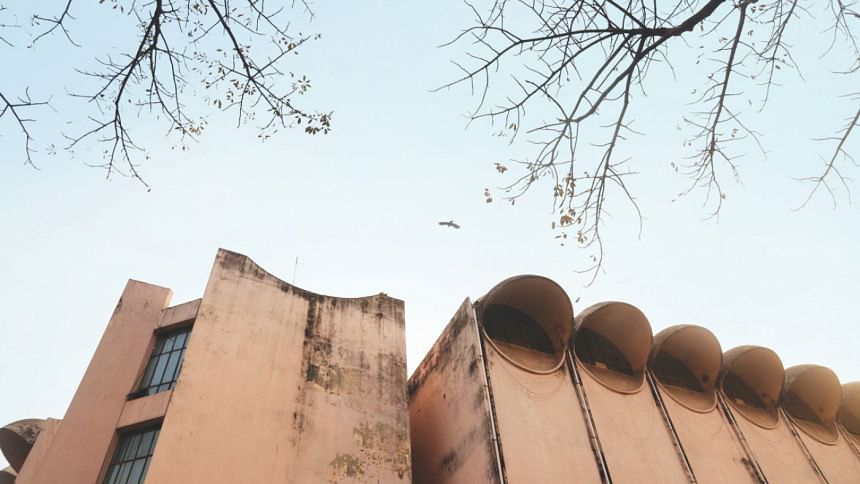
A museum is meant to be a gateway—a magical door into another world at a different time and place. For those (like this writer) who are not avid readers and are more visual learners, there are not many places better than museums to learn, experience and marvel at the wonders of the world.
The Bangladesh National Museum (BNM), with a total area of over 200,000 square feet and consisting of 45 galleries under four main sections—History and Classical Art, Ethnography and Decorative Art, Contemporary Art and World Civilisation and Natural History—boasts itself as one of the biggest museums in South Asia. Aside from the main museum, it holds two temporary exhibition galleries and two auditoriums where various discussions and cultural programmes are organised year-round.
But the country's supposed premier space to learn and experience the country's history, culture, geography, anthropology and art falls considerably short of providing the experience its name promises. Walking into the first gallery does feel like walking into a different time, but not how you'd imagine. The blandly-lit room, with its huge wooden map of Bangladesh where different districts are indicated by little lights, was set up probably in its very early days (when it was transformed into the BNM from the Dhaka Museum in 1983) and looks and feels very dated. The vibe carries into the next galleries—rural Bangladesh (which is just a whole wall consisting of generic painting of the country) and the Sundarbans (a poorly-lit corridor with showcases replicating the mangrove forest and some gnarly-looking stuffed animals). The next few galleries—dedicated to rocks and minerals, indigenous flora and fauna, and "Life in Bangladesh"—consist of samples kept in showcases with no comprehensive text about the exhibits. It is difficult to feel a sense of wonder and amazement—one of the most important things one looks for in a museum—as it gives the impression of a walking tour providing basic general knowledge.
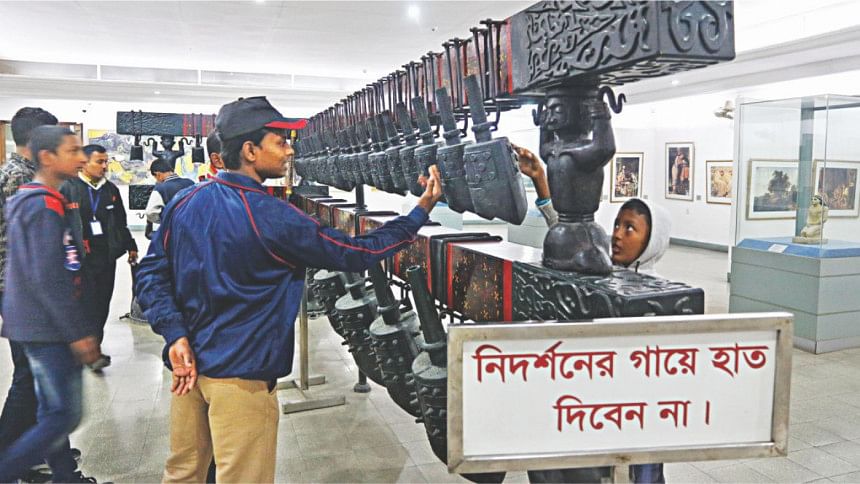
While some of the galleries—like the boats of Bangladesh, tribes of Bangladesh, archaeological artefacts, sculptures, inscriptions and wood carvings—are more interesting, the poorly-written labels and lack of accompanying information mean that no visitor can really take a moment and be immersed in the displays. Some of the collections are impressive, but their incoherent and confusing placement (for example, sculptures from different eras placed adjacently without much explanation) seriously take away from the experience.
There, however, is a gallery in stark contrast to all of this: the Shilpacharya Zainul Abedin Gallery (which is sponsored by the IFIC Bank with technical assistance from Drik). From its floors, walls, lighting, curatorial process to aesthetics and digital displays, this is the first and only gallery that feels like an actual, international-standard museum. The recently-renovated galleries on Bangladesh's Liberation War are also far better-developed and maintained, both in terms of information and presentation.
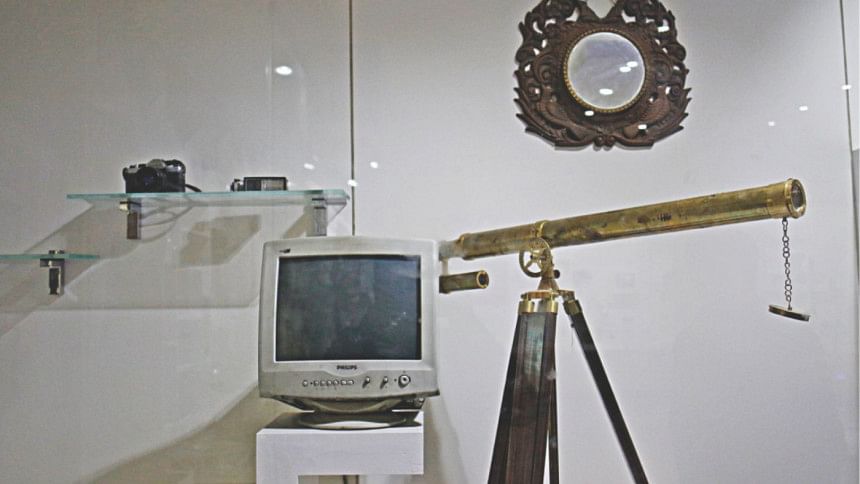
On the other hand, some of the galleries are downright confusing, like the first gallery of the second floor—a gallery of artefacts collected by the museum between 2014 and 2016. Artefacts are placed in the gallery without any classification and coherence: a sari with Tagore poems printed on it; personal documents of noted personalities; rare, old books; and pictures of two rare monkeys that were killed in a road accident, along with a video report on them, are inexplicably placed in the same gallery. The gallery is also a testament of what appears to be the museum's approach to its collection: amassing whatever artefacts possible and putting them on display without a lot of curatorial thought put into it. Another example is the gallery of glassware: one of the showcases contains bottles of alcoholic beverages that are available in the market, and can possibly be purchased from water bottle sellers at New Market. On the third floor in the world civilisation department, there is a corner called the Switzerland Corner, which contains two glass frames of old documents of some high-level diplomatic correspondence and nothing else.
On the third floor of the gallery, a Western Art gallery has rather poorly-drawn replicas of world famous paintings—from Van Gogh's "Starry Night" to Da Vinci's "Mona Lisa" and "The Last Supper" and Picasso's "Guernica", which are more of an eyesore than a marvel. While it is understandable that iconic paintings of this stature may not be possible to be acquired by the museum, there could have been a much better way of showing them than pasting their prints on the walls.
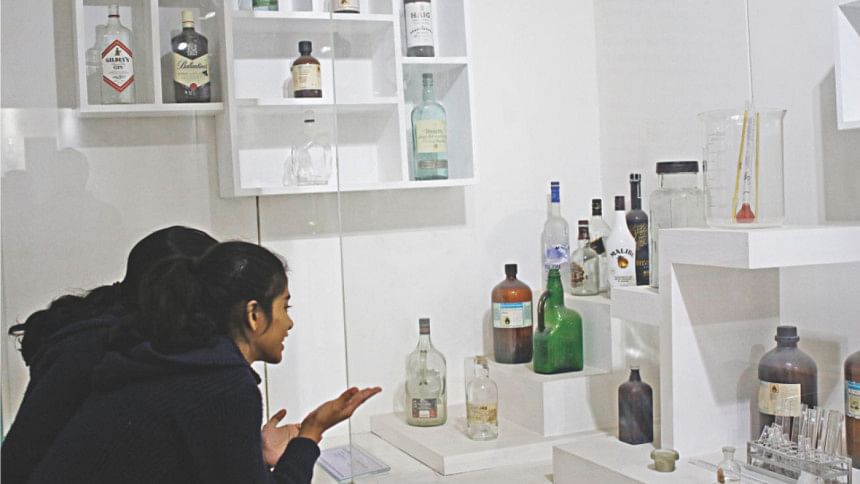
The keeper of the museum's Ethnography and Decorative Art, Nure Nasreen describes the museum's curatorial process as such: "When this museum was opened in 1983, a working board comprising experts made a manual and a design. We are now working to renovate those galleries. It is a continuous process."
She admits that the main design of the galleries has not changed since their inception. "We have added video displays and new artefacts to make it modern and attractive, keeping the main design intact," she explains.
When asked why there is an old CRT computer monitor in the glassware gallery, Nasreen answers, "Because it is made of glass." Asked about the alcohol bottles, the unfazed keeper explains, "This museum began its collection in 1913 and it is growing. We have a contemporary history section as well where we display the modern objects we have collected."
She also highlights that every renovation is approved by the trustee board and committee: "It is not by anyone's individual decision."
Asked about the gallery of collections from 2014–16 and its lack of coherence, Nasreen says: "All the four departments display their main collections acquired between that time, so one of them may be natural history, the next one ethnography. This is a temporary exhibition, and we will soon dismantle it and move the objects."
Md Shawkat Nabi, Secretary of Bangladesh National Museum, admits that there is scope for improvement when it comes to curatorial oversight. "The curatorial team has more to do in this regard. Maybe all of that work is not being done properly," he says.
Cultural Affairs Minister Asaduzzaman Noor informs Star Weekend that he is not happy with the aesthetic look of the permanent galleries. "Maybe the people at the museum will not admit it, but we don't have a curator at our museum. We have a DG [Director General]. He is the head of the museum. There is no post of DG in any museum in the world, and it is not a transferrable post. One government official is there now; someone will replace him in a few years. This should not be the case for a museum. A museum has to have an expert as a curator. Since we do not have such an expert here, I think we should bring a curator from abroad and curate it. We want to start working on that. Those in charge of the museum are probably focusing more along the lines of expansion than curation. But if we had the capability, we could do all of it simultaneously."
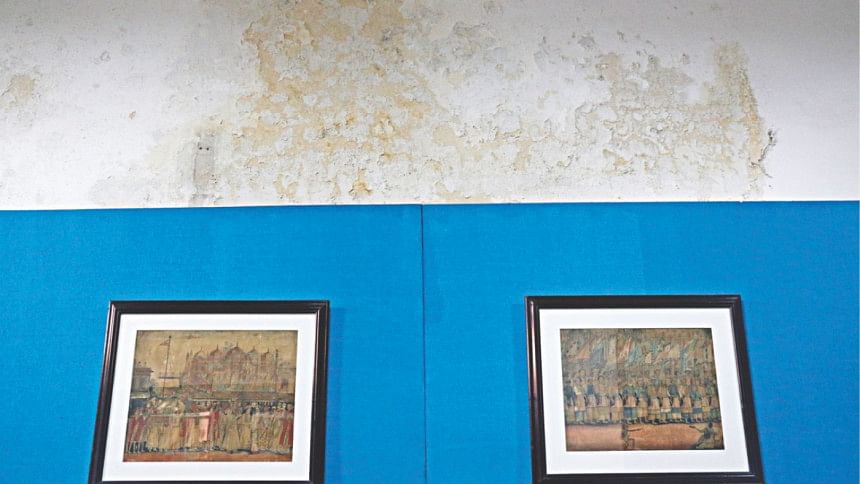
The cultural affairs ministry's budget for 2016–17 shows a total of BDT 31.99 crore allocated for operational and project costs of all museums under BNM for the 2015–16 fiscal year, including BDT 21.60 crore for BNM's operational costs alone. According to Nabi, however, the biggest challenge to implementing changes in the museum is finance. "We cannot design and decorate the galleries because of a lack of funds, but we have attempted to renovate one or two galleries every year. We are also trying to get sponsorships from banks and other sources," he claims.
The Minister states that work is being done on modernising and renovating the museum. Most importantly, a new building for BNM is in the works. "The Prime Minister has already approved the design, now a plan is underway. Once the building is completed, it will definitely improve the museum's facilities. You'll see that there are a lot of activities like programmes, exhibitions and publication ceremonies these days, which shows that the BNM is more active than before."
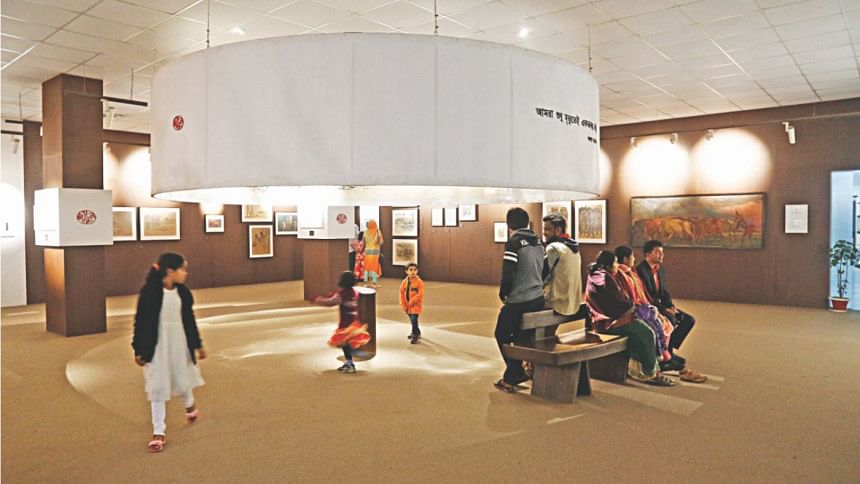
It was hard to get a hold of updated documents and administrative authorities to figure out how the museum operates. The museum's latest annual report is not online. When asked about it, education officer Syed Shamsul Karim claims it was readily available on the website, but could not provide it when requested. He promised to send it over e-mail, but when this writer followed up with him the next day, he said, "Let me see if it is ready." BNM entertained a total of 770,000+ visitors in the 2016–17 period, and the number is steadily on the rise.
"According to the annual plan of action with the government, we give a target to the Ministry (of Cultural Affairs)," says Nabi. "We set a target of visitors we want to attract, and according to that, we act proactively. We have a school programme, and we contact schools across the country to bring their students. We have succeeded in fulfilling this target every year."
When asked who the museum's target audience is, Nabi says, "Our target is people from all walks of life, but we have a special focus on children. We want them to take back an educational experience from here."
One of the four major goals of the museum (as per its website) is to "Study", including to "support scholarly investigation and research in order to document, catalogue, and publish the museum's objects as well as to contribute to knowledge and human achievement." Asked about the museum's research and publications in recent years, Nabi says, "We have begun work on the e-newsletter. Our yearly journal was not published for the last few years, but a new journal is waiting to be published in Bengali and English. In fact, one of the conditions for promotion for our officers is to do research and our officers are all doing their work."
Upon checking the museum's publication section, the last published journal came out in 2013, and the one before that came out in 2005. Almost all the other publications of the museum in the last few years have been catalogues for special exhibitions, postcards and the like, save for a book on Nalinikanta Bhatashali, the first curator of the museum (when it was established under British Rule as Dhaka Museum), another titled "Muslin: Our Story" (which was part of a project by Drik) and a descriptive catalogue of Arabic and Persian inscriptions at the museum.
BNM also operates five other museums across the country—Ahsan Manzil (Dhaka), Museum of Independence (Dhaka), Osmany Museum (Sylhet), Zia Memorial Museum (Chittagong) and Shilpacharya Zainul Abedin Sangrahashala (Mymensingh). Of them, according to the 2015–16 BNM annual report (which does not list the Museum of Independence in the list of organisations under it but refers to it later in the table for attendance numbers), no new items were acquired for Ahsan Manzil, Osmany Museum, Zia Memorial Museum and Shilpacharya Zainul Abedin Sangrahashala that year. It says 49 items were acquired for Polli Kabi Jasimuddin Sangrahashala (which is not listed as an organisation under BNM). The museums in Sylhet, Chittagong and Mymensingh also saw less than 100,000 visitors each in the year (with Osmany Museum seeing a measly turnout of 2,957 people). The condition of these museums calls for a much deeper and detailed investigation, which, while beyond the scope of this story, definitely remains of interest to this writer.
Granted, the national museum can be an exciting visit for a school-going child, in a city where educational entertainment is a grave scarcity for the adult population and with the resources BNM has, is it doing enough?

 For all latest news, follow The Daily Star's Google News channel.
For all latest news, follow The Daily Star's Google News channel. 


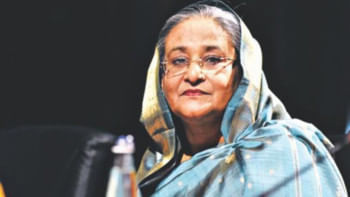
Comments